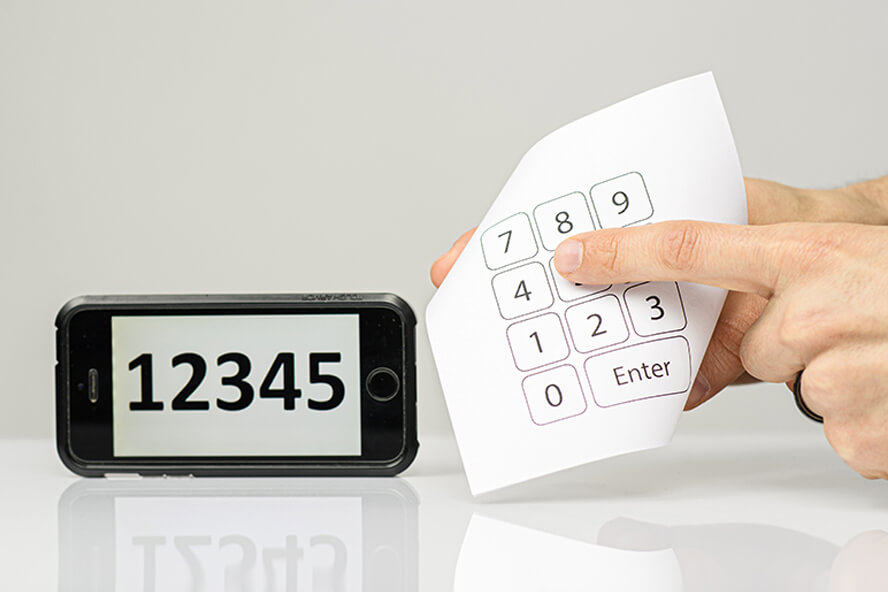Reinventing everyday items to live more efficiently
Want to change the volume of your music just by touching your clothes? Here’s a way to do it that still allows you to wash the clothes – which also charge themselves.
Wish you could use any paper notebook as a tablet? Simply type on the paper itself like a keyboard.
What if you didn’t have to remove a bandage to tell how well a wound is healing? Disposable smart bandages could monitor the wound for you – and heal the wound at the same time.
These are all inventions that the FlexiLab, led by Purdue University engineer Ramses Martinez, has developed to make the Internet of Things more practical for everyday use. This internet is any network of devices that could one day include various items in your home in addition to smart fridges and smartwatches.
“The goal is to have seamless communication between humans, machines and household items in the near future,” said Martinez, an expert in cyberphysical interaction and a Purdue assistant professor of industrial engineering and biomedical engineering.
That communication isn’t seamless if a smart object costs too much or gets in the way of a routine rather than simplifying it – problems that have so far barred the Internet of Things from growing in home environments.
Electronic clothing could be a pain if it required taking the battery and electronics out to wash the garment, a paper keyboard isn’t any good if it degrades with use, and no one would buy wound-healing bandages if they’re significantly more expensive than ordinary bandages.
To address these challenges and make communication with traditionally non-electronic objects as seamless as with a smartphone, the FlexiLab rethinks how the technology is manufactured. See examples in a video on YouTube.
Printing new materials like newspapers
Augmenting the functionality of household items requires embedding circuits that you can’t see into their structure. But to keep these items affordable, their fabrication process also needs to be easy to mass produce using existing manufacturing methods.
“Every time my group works on the development of a new material, we focus on how to make its fabrication simple,” Martinez said. “One of the most inexpensive things that can be fabricated in large quantities at high speed is newspapers, so we use a similar manufacturing technique to print electronics.”
Printing materials like newspapers allows them to be more flexible and smoother. Using this technique, Martinez’s lab spray paints or stencils arrays of sensors onto paper-like materials and then integrates them with other components to build technology such as wound-tracking bandages or paper keyboards.
Other materials that Martinez has developed, such as conductive silk, are threaded through a conventional sewing machine to create embroidered patterns and circuits on any textile or cloth, which enables features such as wireless volume control on smart clothes capable of playing music.
Many of these reinvented everyday items also come with a way to power themselves. The electronic clothes and paper keyboard self-power just by being worn or pressed by the user, thanks to the embedding of nano-sized energy generators that safely harvest electricity produced from mechanical movement of the wearer.
Fighting disease at home (literally)
Each of Martinez’s inventions not only enhances commonly used objects but also prevents or treats disease. The electronic clothes repel bacteria and stains, for example, and dirt and dust on the paper keyboard can be easily wiped away.
Limitations in at-home diagnostics initially drove Martinez to find ways to make any kind of object “smart.”
“Most of my research is focused on expanding the general public’s access to biomedical technology,” Martinez said. “I find it really disappointing that we are in the 2020s, and you still have to go to a doctor because there are no serious diagnostic tools that you can use at home. Many patients who can’t afford a doctor’s visit wait too long, and when they finally go because it’s then really obvious that something is wrong, the treatment is more expensive.”
On the way to achieving better self-diagnostic tools, Martinez’s lab has addressed challenges in using sensor technology that can track biometrics such as heart rate, hydration level and temperature as a sticker on the skin. Martinez and his collaborators have developed ways to make these stickers self-powered, easy to fabricate at low cost and capable of wirelessly sending data in real time to a smartphone.
Making robots safe and trustworthy
Martinez also is paving the way for technology that may become common at home in the future, such as caregiving robots. In 2019, Martinez’s lab developed a method for efficiently 3D printing soft robots with human-like hands, as opposed to hard claw grippers that children and the elderly would be less likely to trust.
“To enhance collaboration between humans and robots, the technology needs to be intrinsically safe. If the materials aren’t compliant with what humans are expecting when they see and feel hands, for example, then they aren’t going to work with those robots,” Martinez said.
Martinez’s inventions have patents filed through the Purdue Research Foundation Office of Technology Commercialization and are available for licensing. His research is financially supported by Purdue University.
About Purdue University
Purdue University is a top public research institution developing practical solutions to today’s toughest challenges. Ranked the No. 5 Most Innovative University in the United States by U.S. News & World Report, Purdue delivers world-changing research and out-of-this-world discovery. Committed to hands-on and online, real-world learning, Purdue offers a transformative education to all. Committed to affordability and accessibility, Purdue has frozen tuition and most fees at 2012-13 levels, enabling more students than ever to graduate debt-free. See how Purdue never stops in the persistent pursuit of the next giant leap at https://purdue.edu/.
Writer, Media contact: Kayla Wiles, 765-494-2432, wiles5@purdue.edu
Source: Ramses Martinez, rmartinez@purdue.edu
